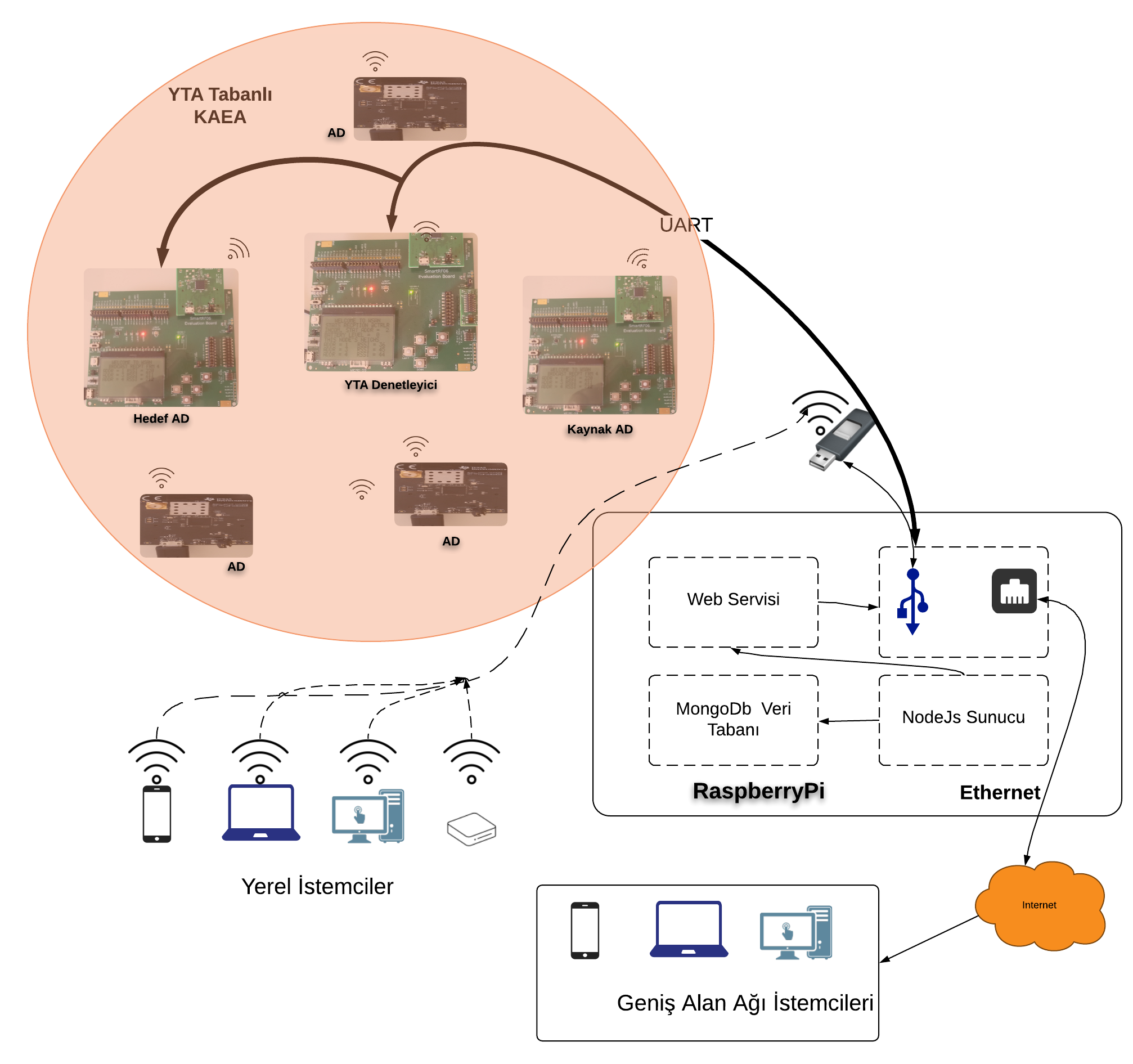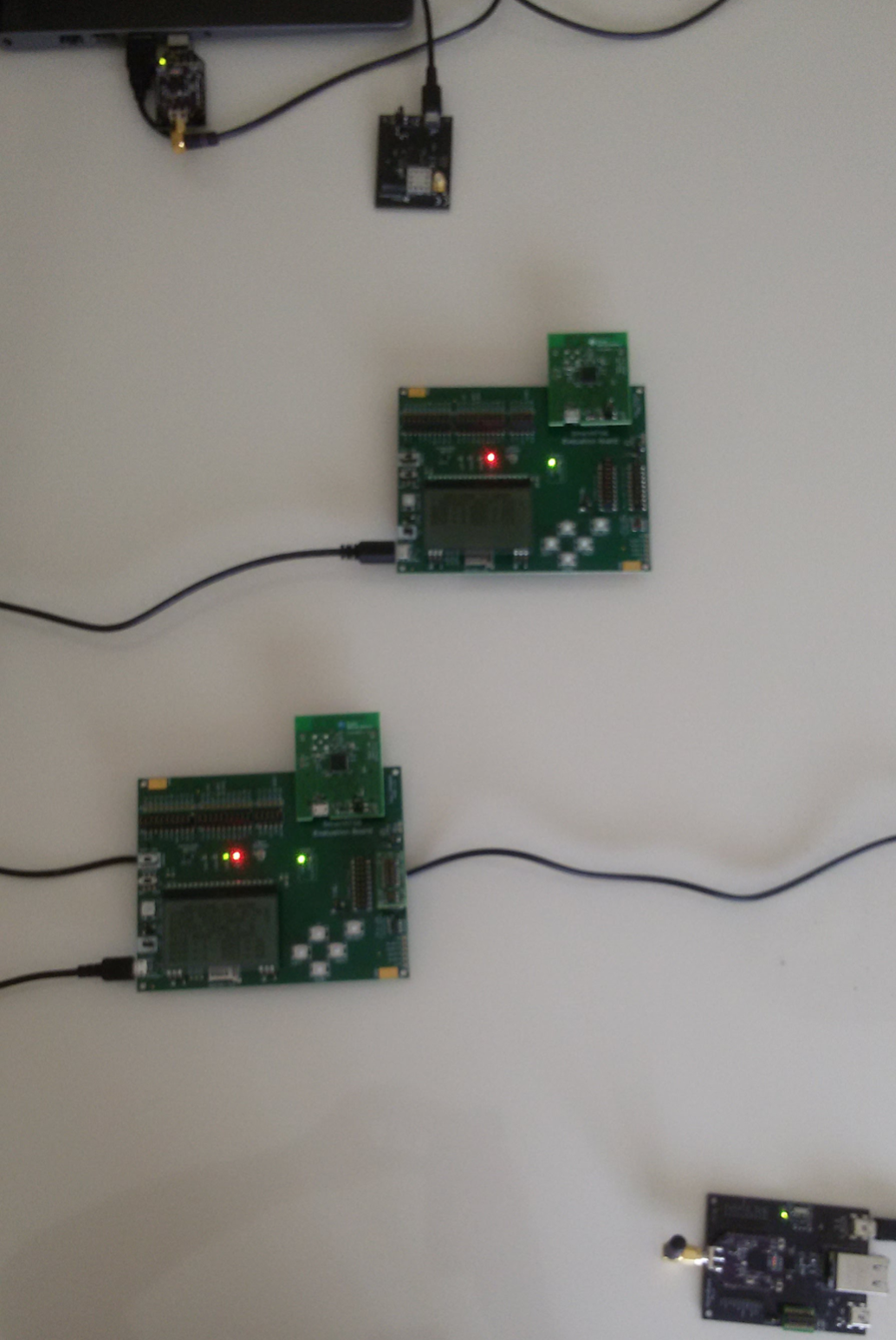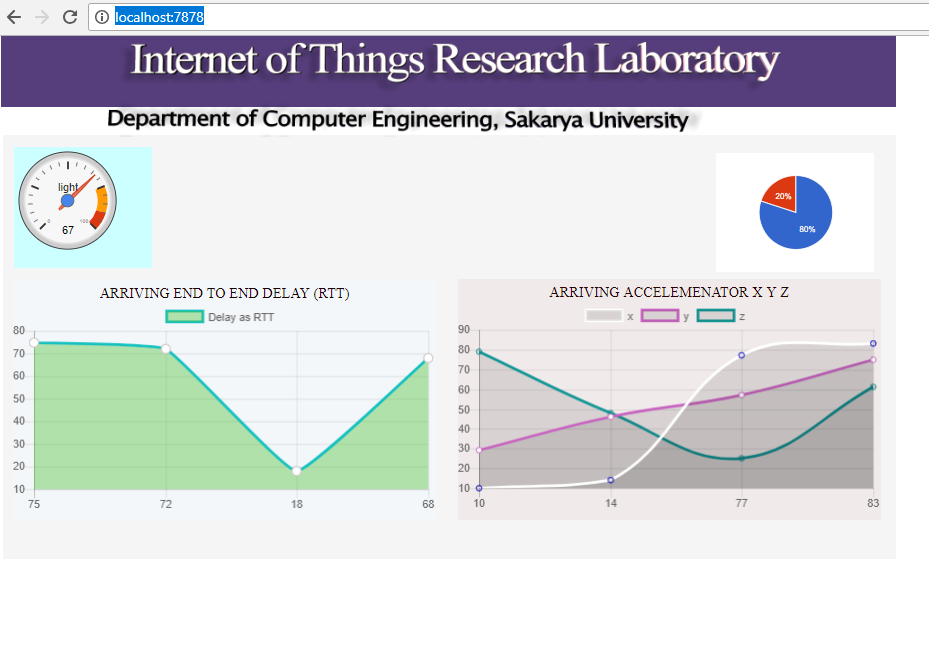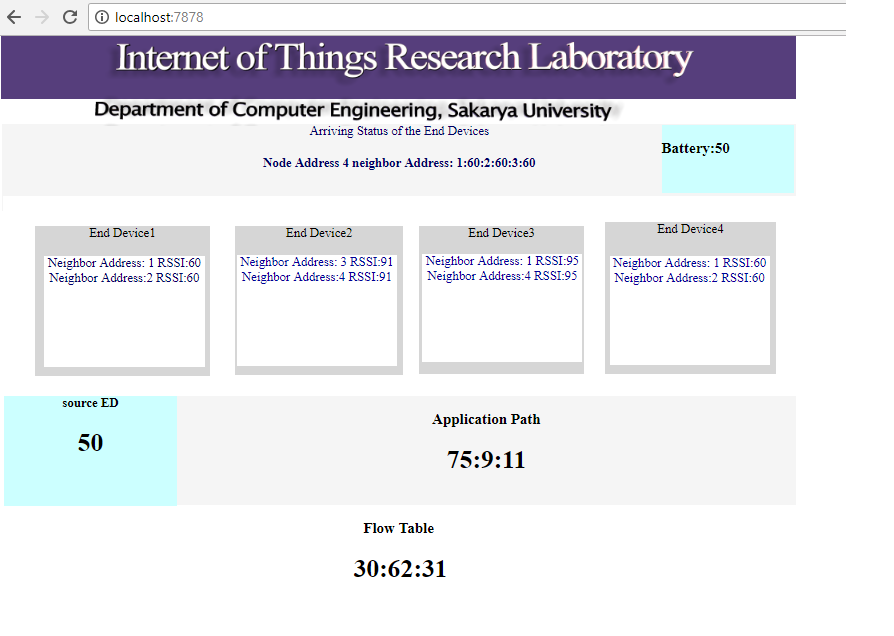Project Title: Integrating Software-Defined Networking(SDN) Approach Into Wireless Sensor And Actuator Networks(WSAN)
Team: Celal ÇEKEN,Ph.D Ali Al-Shaikhlia,Ph.D. Candidate Mohammed Al-Hubaishi,Ph.D. Candidate Kadir Erkan,Ph.D
Sponsors: TÜBİTAK, Sakarya University
Start Date: 2016
Project Overview
Project Video 1.1: Simulation Model
Publications
A New Routing Discovery Mechanism for SDN Enabled Clustered WSAN
Choosing the shortest distance route may not be the most appropriate decision for energy efficient network design. Power consumption ratio of any node increases when different routes use the same node, which may also shorten the network lifetime. When this aspect is considered, it is not difficult to conclude 5 of 20 that routing decision is a vital mechanism for energy-aware network structures. In this study, we proposed a new routing discovery mechanism that incorporates fuzzy based dijsktra’s algorithm into routing process in order for SDNC decision making module to be more effective. In the proposed SDNC, which is outlined in the given Figure, the End Device Status Aggregation (EDSA) unit collects ED statuses such as remaining energy and neighbor device list together with related SNR periodically. Each ED transmits a command frame including device status to SDNC in order to update its status information in SDNC. When an application running on an ED need to communicate with a destination node, it firstly sends a connection request to the SDNC to be able to get the proper path to the destination.
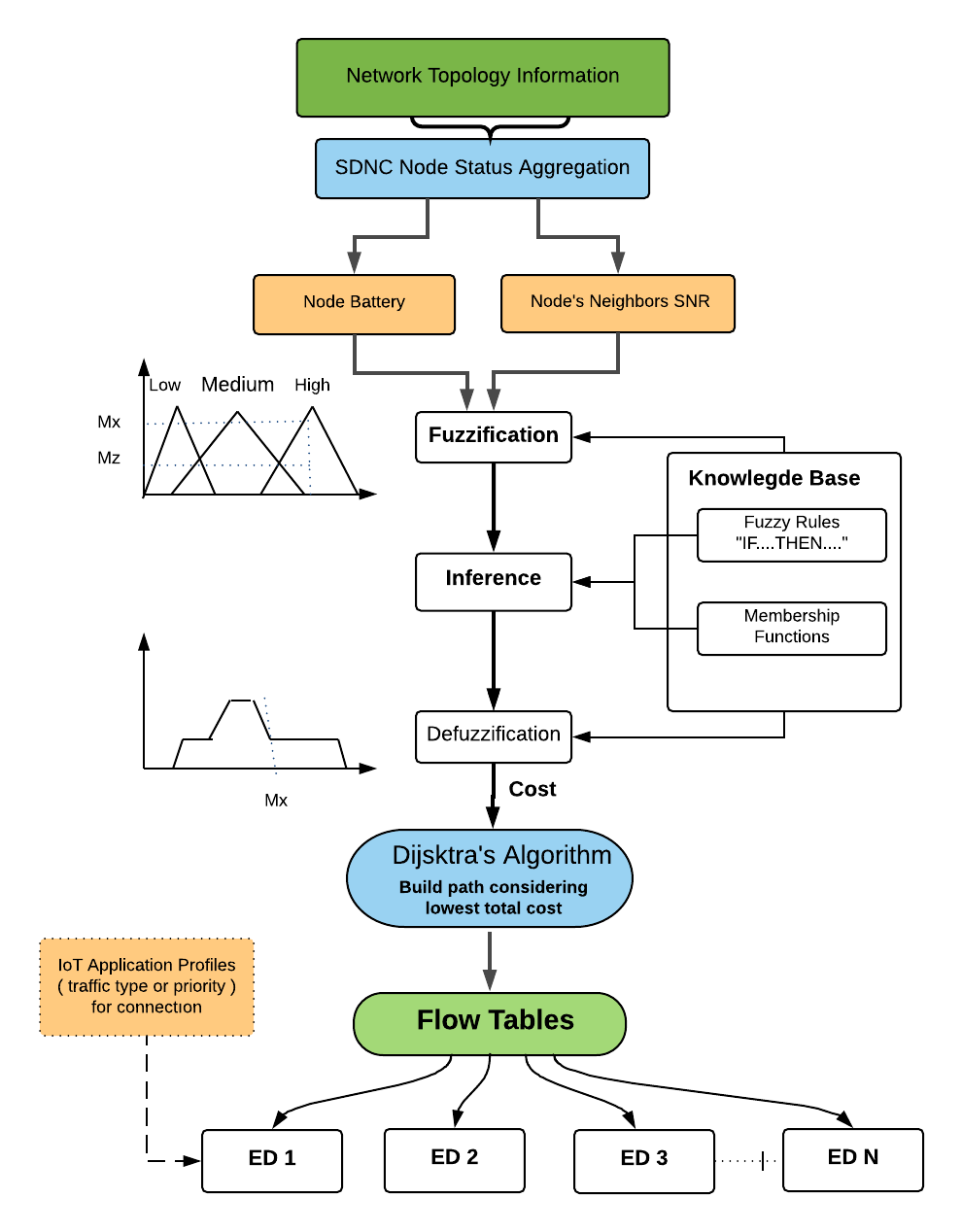
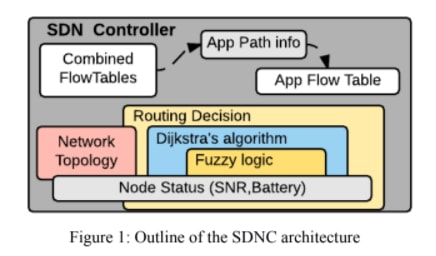
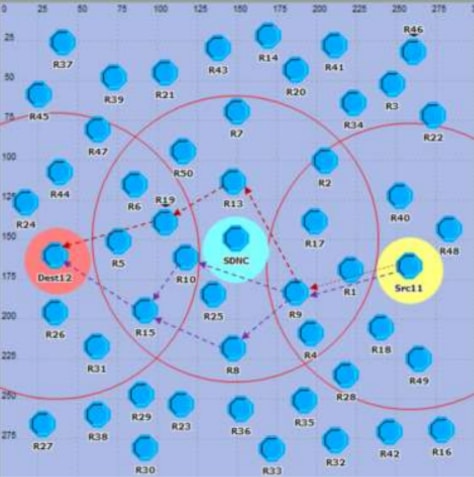
Simulation Environment
Two different simulation scenarios were evaluated in order to investigate the performance of the developed models and algorithms. While the SDNC in the first scenario employed the proposed fuzzy-based Dijkstra’s algorithm so that the optimum path could be established, the second scenario included an SDNC with a regular Dijkstra’s algorithm. Having these two alternatives in hand, the impact of the proposed routing discovery algorithm can be easily extracted and interpreted from the simulation results. Each scenario was simulated under varying working conditions using commercially available software called Riverbed Modeler. An illustration of the network together with the developed components and algorithms is shown in the Figure.
Simulation Results
The findings show that the proposed algorithm shows better performance for all values of the number of application, as a consequence of the developed model that considers also the battery level of the next hop device, as stated earlier. When all applications are running, the first node death time for the network with the proposed algorithm is 9500 seconds, whereas the regular Dijkstra’s algorithm the first node death time is approximately 8700 seconds.
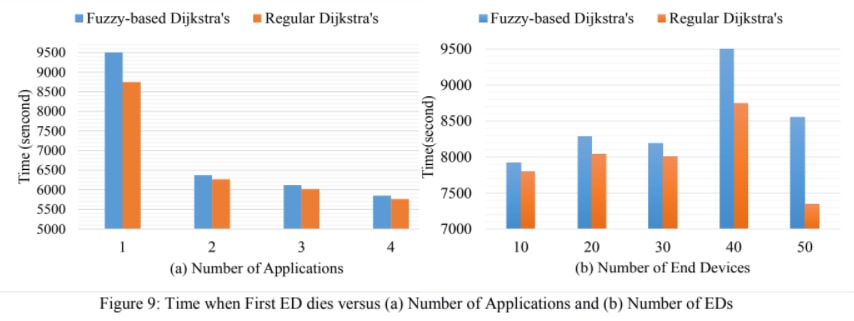
Physical Implementation
